The purpose of this exercise is to plant a seed in fertile minds, a seed that could germinate and result in life-long learning. A command of basic chords is important, but the expanding of your vocabulary of chords can become a source of pleasure for you and those who listen.
Example 1 : Using the basic chords in F major
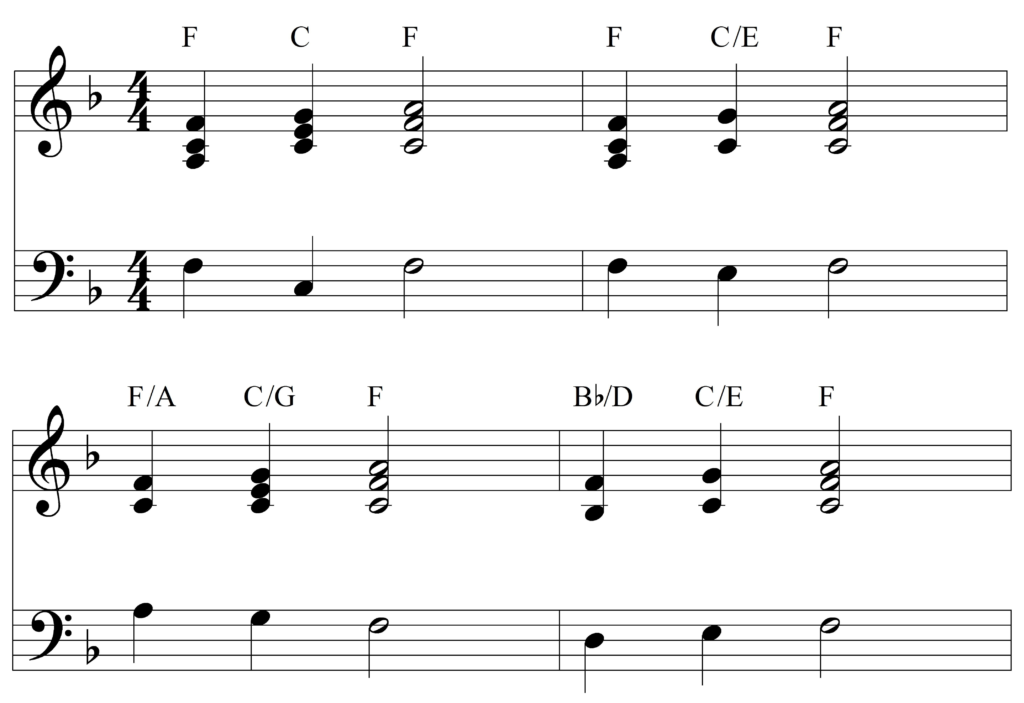
With a little effort these progressions can be transposed to other keys. Suggestion: Think first, then play. Select a key (e.g. G major), and play the first three pitches of the scale. Name the three basic chords of the key: G, C and D. Where there is a slash ( / ) after a chord symbol (e.g. D/F#), the letter after the slash indicates that F#, the 3rd of the chord, is in the bass. Notating each progression on the staffs below might be helpful.
Example 2: Transposed to G
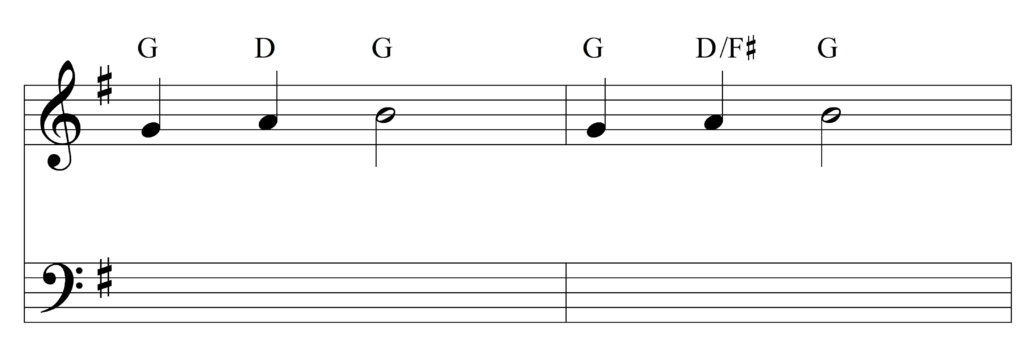
The chord symbol G/B indicates that B, the third of the chord, is in the bass. The symbol D/A indicates that A, the fifth of the chord, is in the bass (see Example 3).
Example 3: Slash Chords

Now consider adding the vi and ii minor chords (see Example 4).
Example 4: Addition of vi and ii chords.
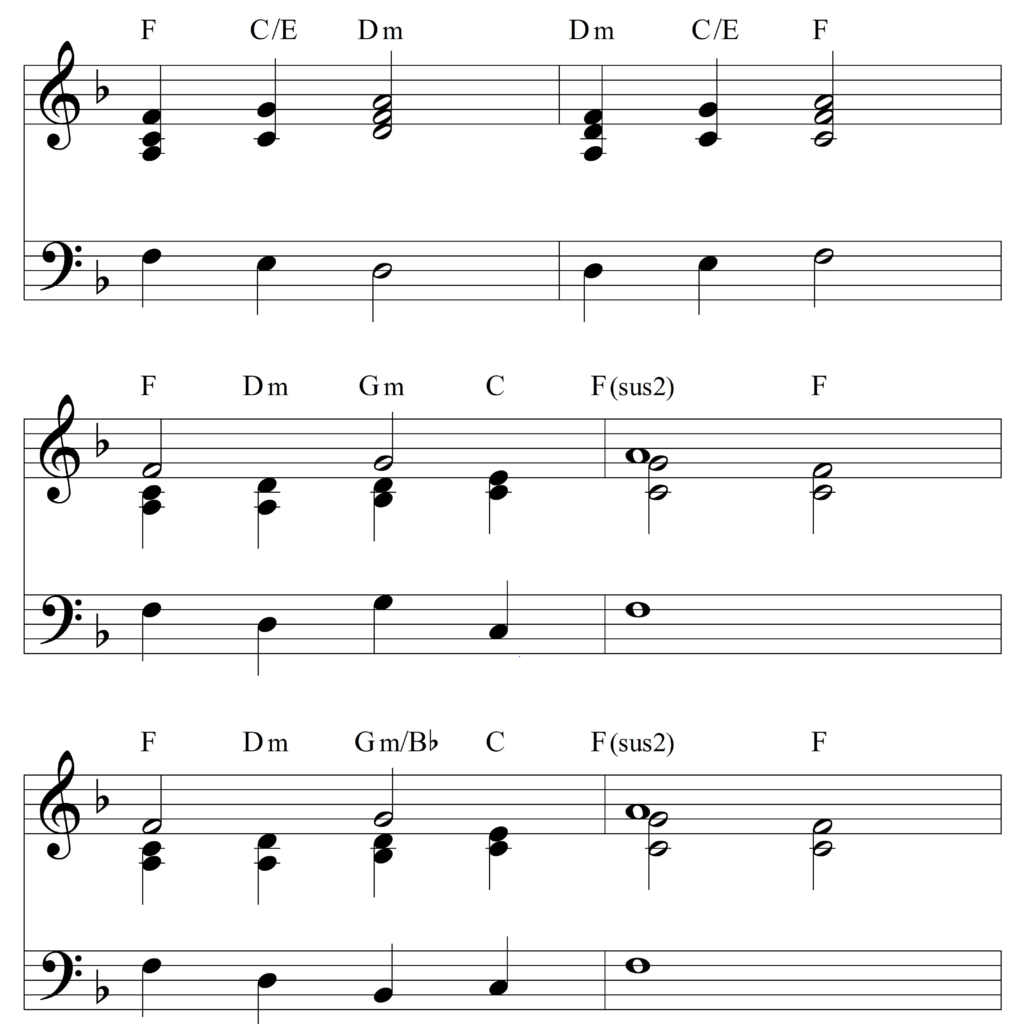
Example 5 shows one option for a modulation to the relative minor.
Example 5: Modulation to the relative minor.
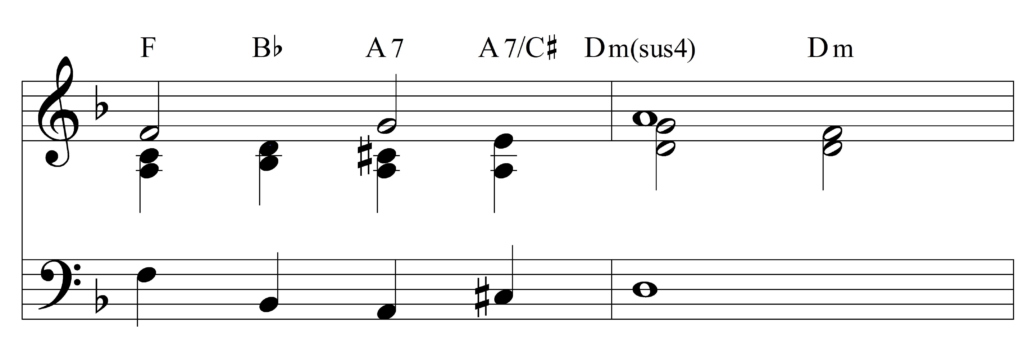
In addition to D minor and G minor, A minor is also one of the minor chords in the key of F major. It is built on the third tone of the scale and has the Roman numeral name iii. In the above example the chord is altered by the addition of C#. Adding a 7th to this chord creates a strong pull to D minor, hence it is analyzed as the dominant of the D minor, or V7 of vi. In Example 6, note the ascending bass and the use of suspensions.
Example 6: Ascending bass line and suspensions.
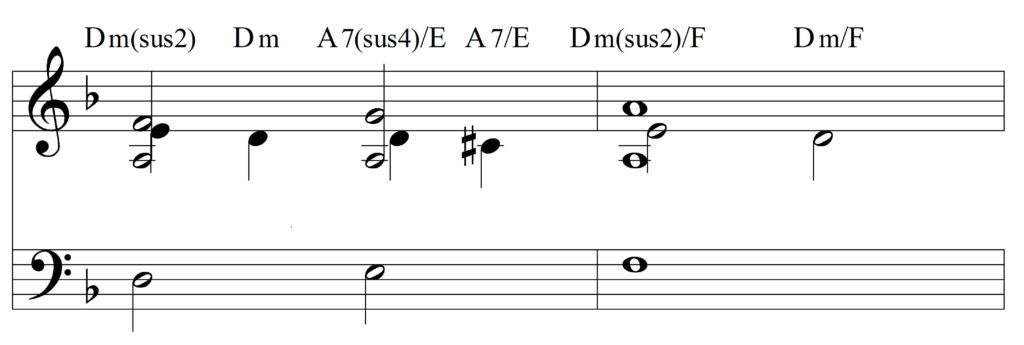
Below are additional chord choices to explore (see Example 7). These are just a few possibilities available for the first three notes of the major scale. Let your imagination and creativity lead you to other choices.
Example 7: Additional chord choices.
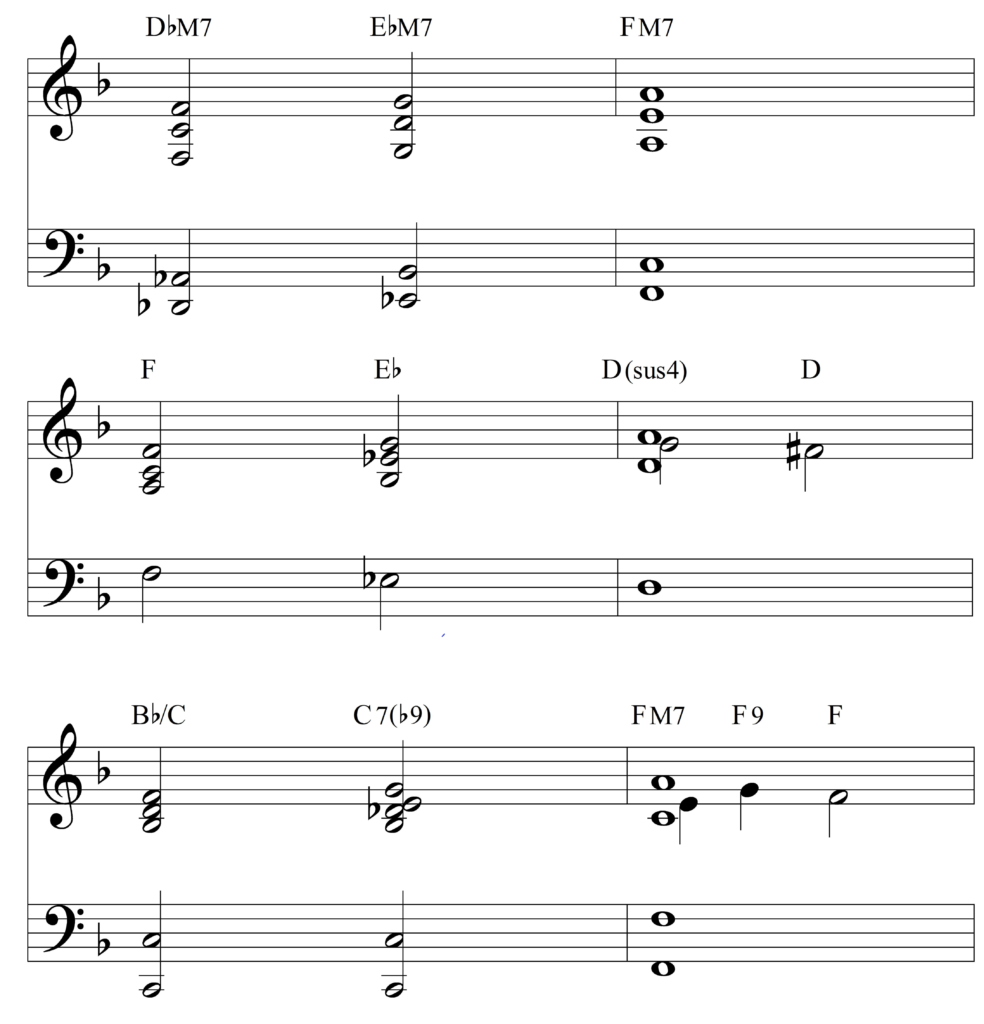
| Dr. Sprunger is Professor Emeritus at Ashand Theological Seminary where he taught music as a integral part of worship and education. In addition to his work as a church musician, he has honed his improvisational skills through accompanying, classroom teaching, and the use of the piano in teaching Dalcroze eurhythmics. Ron has published arrangements for organ, and with Linda, hiw wife, has written numerous collections for the Lillenas Publishing Co. For more examples of Dr. Sprunger’s creative teaching, visit his website, www.WantToPlayByEar.com. |
Comments are closed.